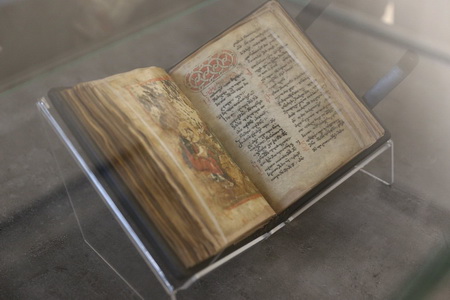UNESCO-featured Georgian manuscripts set for Tbilisi exhibition

A display of some of the major manuscripts from Georgia’s history, featured by UNESCO, will open at the National Archives of Georgia next week.
The month-long exhibition will showcase manuscripts dated from the 4th century AD to the late Medieval era, at the Exhibition Pavilion of the venue.
What brings the exhibits under a common theme is their selection for the UNESCO Memory of the World Register over the last five years.

A page of the gospel palimpsest added to the list in 2017. Photo: National Archives of Georgia.
Georgian state cultural agencies have submitted the selected historical documents in three submissions since 2013.
The most recent submission includes a gospel manuscript featuring layers of text dating back to different eras, from the 9th to 11th centuries. It was accepted for the Register in 2017.
Its pages feature text written in the Asomtavruli, Nuskhuri and Mkhedruli scripts of the Georgian language. The three writing systems were also recognised by UNESCO as part of its List of Intangible Cultural Heritage of Humanity in a decision in December 2016.

A liturgical lectionary complete in the Asomtavruli script and added to the Register in 2015. Photo: National Archives of Georgia.
Previous Georgian submissions to the Register include Georgian Byzantine manuscripts that feature important works from Byzantine literary history, lost in Greek and other languages but preserved in Georgian.
Other exhibits from Georgia’s history also include a geographical atlas created by 18th century geographer and historian Vakhushti Bagrationi, recognised as "the first complete geographical description of Georgia's historical territory”.
The earliest manuscripts from Georgia, selected for the Register, are secular and ecclesiastic literature dating from the 4th century.
The National Archives exhibition will run in Tbilisi from January 10-February 11.
 Tweet
Tweet  Share
Share